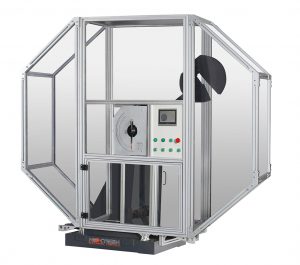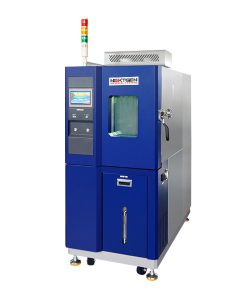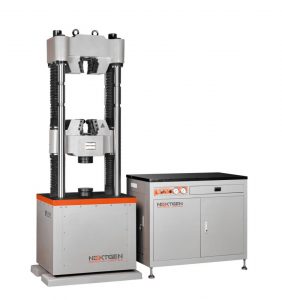Have you noticed that over time, often just a few years, testing equipment begins to show signs of trouble? The need to replace worn components, frequent malfunctions, inconsistent data accuracy, and the inability to meet modern standards are just some of the clear indicators. These challenges not only disrupt workflows but also signal that it may be time to upgrade your equipment to maintain reliability and precision in your operations.
Outdated material testing equipment does not just affect accuracy—it can also lead to inefficiencies that waste valuable time and resources. As industries continue to develop and standards become more stringent, relying on aging tools can hinder productivity and negatively affect quality. Regular evaluations of your equipment’s performance are crucial for identifying potential issues early and making sure that your processes remain efficient, compliant, and competitive. Throughout this article, we will discuss the signs that indicate it is time to upgrade your testing devices, the advantages of modern material testing tools, and key considerations when selecting the right equipment.
Signs Your Testing Equipment Needs Updating
There are numerous indicators that suggest it is time to upgrade your testing devices. Here are some of the most common and critical signs that may suggest the need for an upgrade:
1. Inconsistent or Unreliable Test Results
When testing equipment delivers inconsistent or unreliable results, it is a clear sign that something is amiss. For example, if identical samples produce different readings under similar conditions, the equipment’s accuracy may have degraded over time. This inconsistency often stems from worn internal components, sensor fatigue, or calibration drift, all of which negatively affect your testing process validity.
Imagine running tests on metal samples for quality control in manufacturing. If the yield strength varies significantly between tests, even when all parameters remain unchanged, it can lead to errors in production and product failure in real-world applications. Such issues not only reduce customer trust but also increase operational costs due to rejected batches and additional testing.
Regular calibration can temporarily address these problems, but when inconsistencies persist despite frequent adjustments, it is time to upgrade to more reliable, up-to-date equipment.
 2. Frequent Breakdowns and Maintenance
2. Frequent Breakdowns and Maintenance
Your equipment frequently breaks down or requires constant maintenance. Over time, mechanical parts wear out, software becomes outdated, and electronic components degrade, making repairs less effective and more costly.
Take, for instance, a laboratory conducting impact tests on metals. If the testing machine breaks down during high-priority projects, it can delay results and disrupt production timelines. Moreover, the cost of refurbishing such machines can quickly exceed the expense of replacing them with new, more efficient models.
In addition to reducing downtime, upgraded equipment offers better warranties and support, minimizing long-term costs and guaranteeing uninterrupted operations.
3. Outdated Technology
The testing industry is characterized by rapid technological advancements. Equipment that was state-of-the-art a decade ago may no longer meet today’s standards. Modern machines feature advanced capabilities like automated data collection, real-time analytics, and increased safety measures, which older models cannot provide.
Older tensile testing machines may lack digital interfaces, making it cumbersome to collect and analyze data. Upgraded systems often come equipped with software that integrates directly into your quality management workflow, saving time and reducing the risk of human error.
Failing to upgrade limits your lab’s ability to adapt to new testing standards and techniques, negatively impacting your competitiveness and operational efficiency.
 4. Safety Concerns
4. Safety Concerns
Older equipment often lacks modern safety features, exposing operators to potential hazards. Signs like overheating, unusual vibrations, or faulty components should never be ignored, as they indicate that the machine is no longer safe to operate.
For example, a high-temperature furnace used in material testing might develop insulation issues over time, increasing the risk of burns or electrical shocks.
Investing in new equipment does not only prevent injury to personnel but also reduces your organization’s liability risk.
5. Difficulty Meeting Industry Standards
To maintain high levels of quality and safety, testing standards are becoming more stringent as certain industries undergo changes.
Consider a company conducting hardness testing on automotive components. If the equipment fails to comply with updated ASTM or ISO standards, the test results may be invalid, potentially causing delays in product approvals or recalls in extreme cases. Investing in modern machines will make certain that your laboratory remains compliant and prevent costly setbacks.
6. Reduced Efficiency and Productivity
Older equipment often operates at slower speeds and lacks modern automation features, significantly reducing productivity. This inefficiency can cause bottlenecks, especially in high-demand environments where timely results are critical.
Key Benefits of Updated Testing Equipment
In the previous section, we touched on some of the benefits of modernizing your material testing equipment through some examples. Here is the full list:
-
Improved Accuracy and Consistency
Modern equipment is engineered to provide precise and repeatable results, even under challenging conditions.
-
Increased Productivity
Upgraded tools often come with faster processing speeds and automation features, allowing you to complete more tests in less time.
-
Enhanced Safety Features
Modern material testing machines are equipped with state-of-the-art safety mechanisms such as automatic shutoffs, ergonomic designs, and fail-safes to prevent accidents. These features protect operators and also guarantee compliance with the most stringent safety regulations, reducing workplace incidents.
-
Better Compliance with Industry Standards
New equipment is designed to meet or exceed the latest ASTM, ISO, or DIN standards, making certain that your results are always in line with industry requirements. The use of a hardness tester with integrated software that tracks testing parameters, allows compliance to be maintained with ease.
-
Reduced Maintenance and Downtime
Upgrading reduces the frequent need for repairs and maintenance of older equipment. With new tools, you can expect longer intervals between servicing and fewer interruptions, ultimately saving time and resources.
-
Smooth Integration with Digital Systems
Modern equipment is built with advanced software and connectivity features, enabling easy integration with laboratory management systems or quality control platforms. This allows real-time monitoring, efficient data management, and detailed analytics to improve decision-making.
-
Cost-Effectiveness in the Long Term
While the upfront investment in new equipment can be substantial, the reduced operational costs, fewer repairs, and energy efficiency of modern machines make them a more economical choice over time. Upgrading to energy-efficient equipment can save significant utility costs over its lifespan.
-
Future-Proofing Your Operations
Staying ahead of technological advancements allows your laboratory or facility to remain competitive in the market. Upgraded tools not only meet current demands but also position you to adapt quickly to new testing methods or standards as they arise.
Need to Update Material Testing Equipment?
 If you have read the information above and recognized the signs that your testing tools need an upgrade, it is clear that new equipment is required. At NextGen Material Testing, we have proudly supplied state-of-the-art material testing equipment for many years, helping customers achieve accuracy, reliability, and efficiency in their testing processes.
If you have read the information above and recognized the signs that your testing tools need an upgrade, it is clear that new equipment is required. At NextGen Material Testing, we have proudly supplied state-of-the-art material testing equipment for many years, helping customers achieve accuracy, reliability, and efficiency in their testing processes.
We offer a comprehensive range of equipment, including the following:
- Metal Testing Equipment
- Plastic Testing Equipment
- Rubber Testing Equipment
- Cement & Concrete Testing Equipment
- Soil Mechanics Testing Equipment
- Rock Mechanics Testing Equipment
Whether you require metal hardness testing tools or an advanced universal testing machine (UTM), you will find the right solution to meet your requirements by exploring our offerings. Dedicated to your success, we have developed our equipment to comply with demanding testing standards, so you will be able to stay ahead of the competition in your field.
The Importance of Modern Testing Tools for Success
Upgrading your material testing equipment is a key step toward maintaining accuracy, efficiency, and compliance in an ever-evolving industrial market environment. As we discussed, outdated tools can lead to inconsistent results, frequent breakdowns, safety risks, and difficulties meeting industry standards. Recognizing these signs early allows you to take proactive measures, helping your operations remain competitive and productive.
Modern material testing equipment offers numerous benefits, from improved accuracy and automation to greater safety and cost-effectiveness. By investing in advanced tools, you can future-proof your operations, optimize workflows, and maintain compliance with international standards like ASTM, ISO, and DIN. These upgrades save time and resources and cement confidence in your testing processes.
If you have questions or need more detailed information about the equipment we offer, please do not hesitate to contact us directly or request an online quote. We are here to help you select the ideal solution for your material testing needs so that your operations achieve the highest standards of performance and precision!